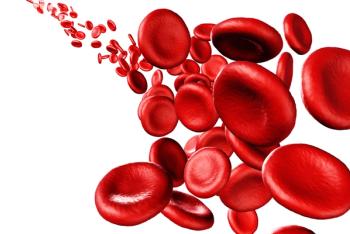
FDA Grants Priority Review to Obinutuzumab for Follicular Lymphoma Treatment
The US Food and Drug Administration has granted Priority Review to obinutuzumab in combination with chemotherapy and followed by obinutuzumab alone for treatment-naïve follicular lymphoma.
The US Food and Drug Administration (FDA) has granted Priority Review to obinutuzumab (Gazyva, Genentech) in combination with chemotherapy and followed by obinutuzumab alone for treatment-naive follicular lymphoma.
“Follicular lymphoma becomes harder to treat each time it returns, and the goal of initial treatment is to prevent the cancer from progressing for as long as possible,” said Genentech’s chief medical officer Sandra Horning, MD, in a
The priority review was granted on the basis of results from the GALLIUM trial, a phase III study including a total of 1,401 previously untreated indolent non-Hodgkin lymphoma patients. Primary results of the trial were
A total of 1,202 of those patients had follicular lymphoma; they were randomized to either obinutuzumab plus chemotherapy followed by obinutuzumab alone for up to 2 years, or to rituximab plus chemotherapy followed by rituximab alone for the same period.
The primary endpoint of progression-free survival as assessed by the investigators was better with obinutuzumab, with a hazard ratio (HR) for progression of 0.68 (95% CI, 0.54–0.87; P = .0016). An independent review committee assessment of progression-free survival was similar, with an HR of 0.72 (95% CI, 0.56–0.93; P = .0018). The median PFS was not yet reached in either arm of the trial.
Grade 3–5 neutropenia occurred in 46.7% of obinutuzumab patients, compared with 39.5% of rituximab patients. Grade 3–5 infections were also more common, at 20.3% with obinutuzumab and 16.4% with rituximab. Other such adverse events that were more frequent with the study drug included infusion-related reactions (12.4% vs 6.7%), thrombocytopenia (6.1% vs 2.7%), second malignancies (4.7% vs 2.7%), and cardiac events (3.9% vs 2.8%).
“Based on the GALLIUM study, Gazyva-based treatment significantly improved progression-free survival over the current standard of care, and we are committed to bringing this potential new option to patients as soon as possible,” Horning said. The FDA’s data of action on this Priority Review is December 23, 2017.
Newsletter
Stay up to date on recent advances in the multidisciplinary approach to cancer.

















































































